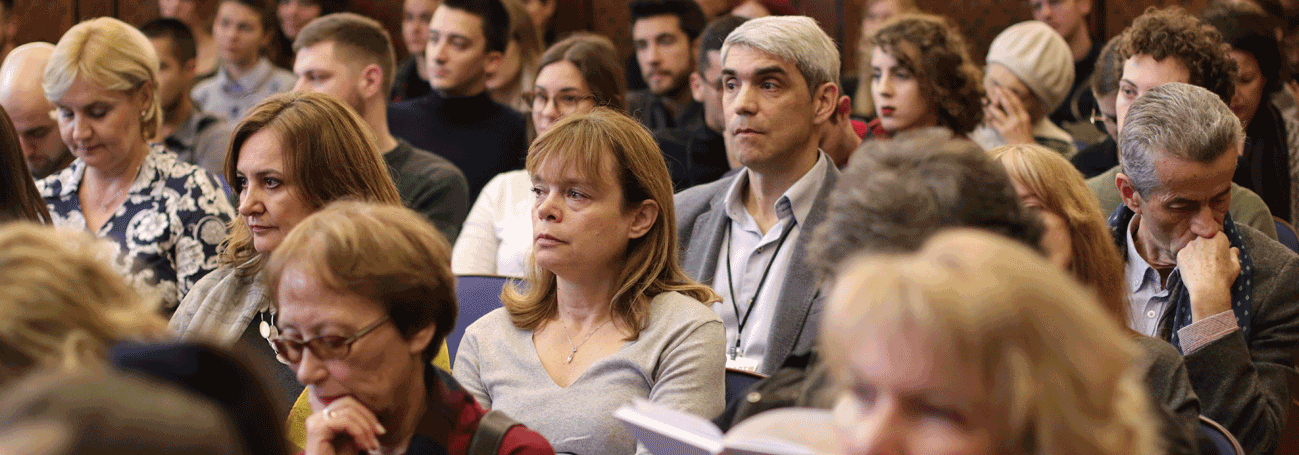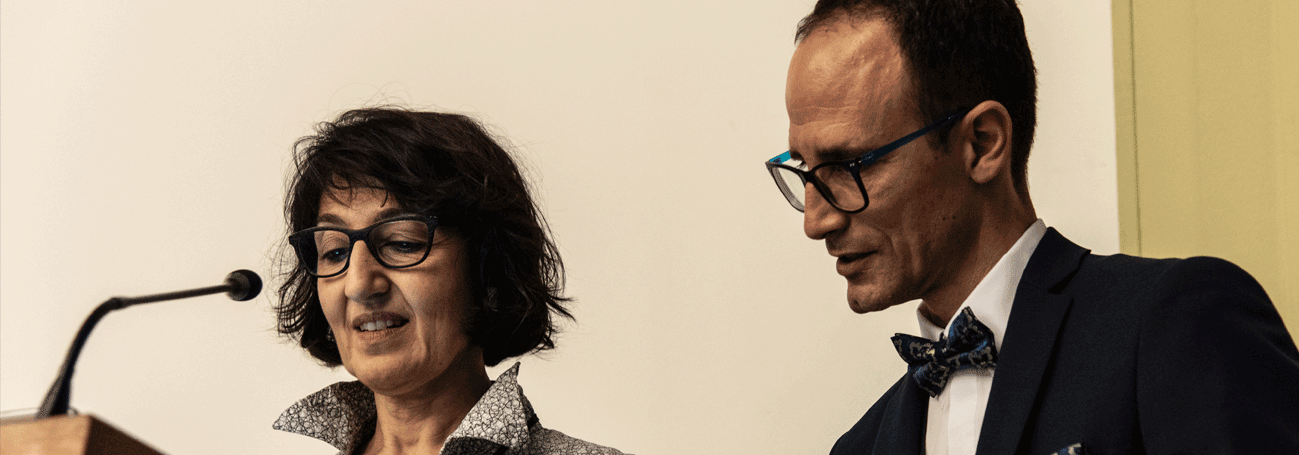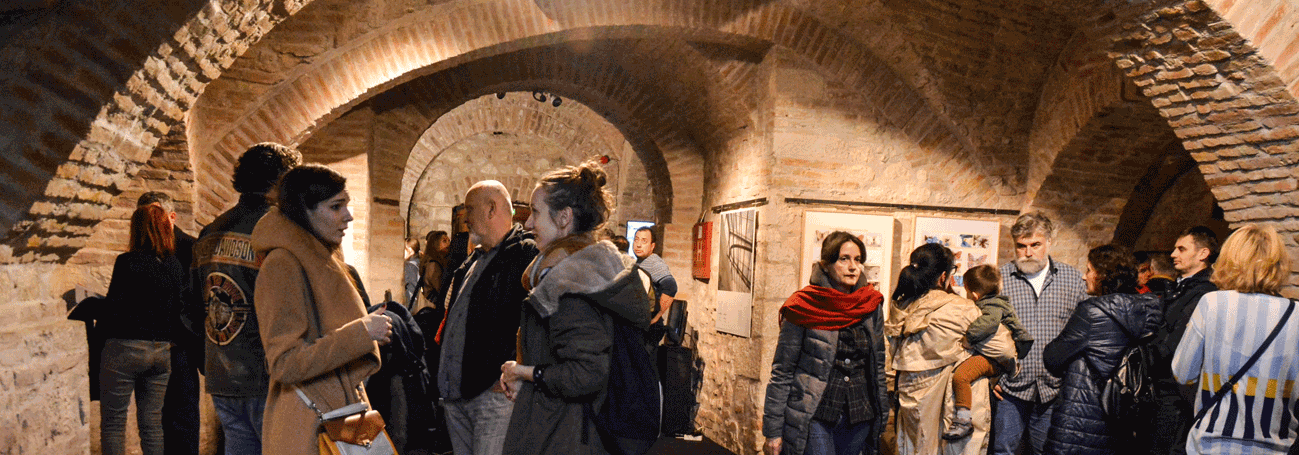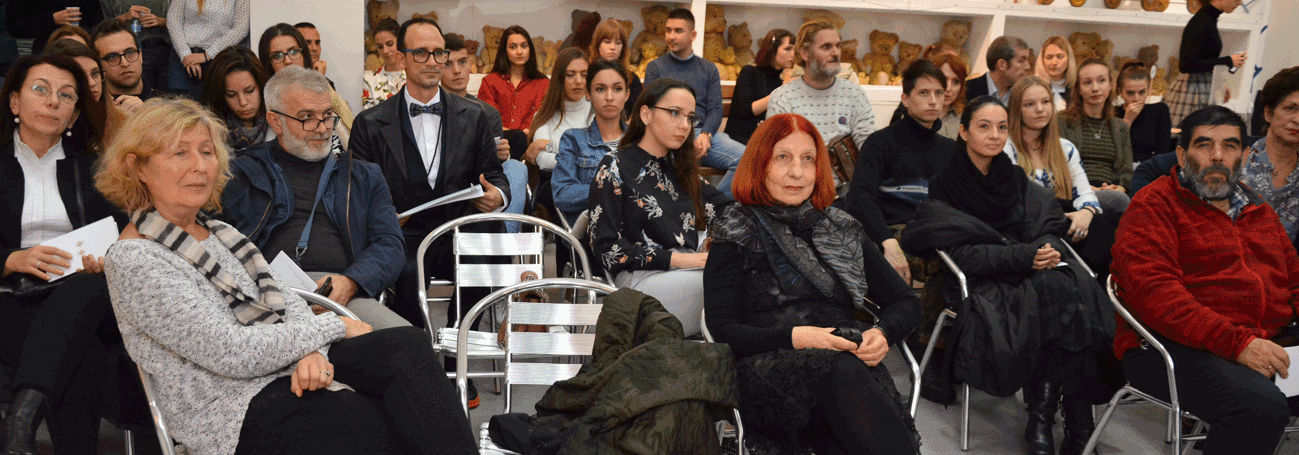Tuesday, 15th October
17.30
Painting perspective
lecturer: Ivana Marcikić, PhD, Faculty of Applied Arts, University of Arts in Belgrade
marcikicivana@yahoo.com
Application of any painting elements as a means of their physical properties that may enhance, decrease or neutralize the visual effect of depth, represents the use of painting perspective method, or painting perspective. Within the lecture, it will be analyzed: antique perspective, fish bones perspective, inverse perspective, renaissance perspective, aerial perspective, as well as the visual effects of deviations from a constructive perspective method.

18.30
Optical anamorphosis and application of perspective
lecturer: Marijana Paunović, PhD, Faculty of Applied Arts, University of Arts in Belgrade
marijanavpaunovic@gmail.com
There are many definitions of anamorphosis, including those which are incomplete or unclear. In the professional literature, there is often a concept of identification of anamorphosis within only one of the groups – optical anamorphosis, or within a subset of perspective anamorphosis. The theme of this lecture is perspective optical anamorphoses and their application in the visual arts.

Tuesday, 29th October
17.30
Geometry in the design of architectural form
lecturer: Slobodan Mišić, PhD, Faculty of Applied Arts, University of Arts in Belgrade
slobodan.misic@fpu.bg.ac.rs
The influence of geometry in architecture is observed from the moment when the man felt the need to design and organize his living space. Geometric constructions are present in shaping the very structure of an architectural object, but also in the concept of forming and realizing the design of an architectural form. Geometry is sometimes obvious and intrusive, and often a trace of geometry in the design of the architectural form is to be discovered. Discovering is a subjective process and therefore offers more options, more opportunities to see an architectural piece that becomes multi-layered and complex.

18.30
Generating membrane structures. Form-finding techniques
lecturer: Jelena Milošević, PhD, Faculty of Architecture, University of Belgrade
jelena@arh.bg.ac.rs
The lecture covers the presentation of analog and digital techniques for form-finding of tensile membrane structures. Form-finding represents the only sustainable approach to the design of these lightweight unconventional spatial structures because it is based on the simultaneous consideration of shape, represented by minimal surfaces, and physical performances. The results of such design processes are structures of specific aesthetics that can find different applications in the design of architectural and urban space.

Tuesday, 12nd November
17.30
Fibonacci aesthetics through the examples of famous buildings in the world’s architecture
lecturer: Jelena Atanasijević, PhD, Faculty of Philology and Arts, University of Kragujevac
jelena.virtualarchitecture@gmail.com
The analysis of significant buildings of classical architecture has shown the application of proper geometric forms and clear proportional systems on all levels of the composition of the architectural assembly. The proportions of the Fibonacci’s series, that is, the harmonic ratio of continuous division are exemplified by the aesthetically valuable objects of classical architecture. The presentation of individual buildings by famous authors in the spirit of Fibonacci’s aesthetics confirms the continuum in the development of architectural thought.
18.30
The role of geometry and geometric models in cultural heritage preservation
lecturer: Magdalena Dragović, PhD, Faculty of Civil Engineering, University of Belgrade
dim@grf.bg.ac.rs
The interpretation of proportions of the sacral cultural heritage of Serbia, i.e. the complex architectural designs of the most famous medieval churches inside monastery complexes, is provided by the methodology which uses the basic geometric shapes of a triangle, circle and square incorporated in more complex geometric schemas, in order to lighten the possibility of reconstruction of devastated, or ruined objects sharing the similar complexity. A variety of possible geometric and other analyses of such monuments increases due to the application of 3D geometric models such as parametric models, generated by contemporary software tools, as well as the models obtained by processing of a terrain data, collected by terrestrial laser scanning or photogrammetric methods. The contemporary trend in the field of studying, presenting and preservation of the world cultural heritage builds the standards which among others include the models in augmented reality.
Tuesday, 19th November
17.30
Lessons from nature
lecturer: Tamara Panić, ind. designer, Faculty of Applied Arts, University of Arts in Belgrade
panictamara@gmail.com
Biomimicry as the future. The topic of the lecture is: the nature as an inspiration and a starting point for innovation in design, the importance of an interdisciplinary team in that process, as well as learning from nature imitation of its form, structure, processes, and ecosystems, in order to devise sustainable and innovative design.
18.30
Application of virtual technology in the field of visualization and experimental design
lecturer: Biljana Jović, PhD, Faculty of Forestry, University of Belgrade
biljana.jovic@sfb.bg.ac.rs
The lecture will discuss the research of new forms using the technology of augmented reality (AR) and virtual reality (VR) through experimental design, with special emphasis bio-mimetic approach.
Tuesday, 26th November
17.30
Ames room and theater: a few examples from the history of scenographic perspective
lecturer: Stella Bataglia, sculptor, Museo Galileo – Institute and Museum of the History of Science, Florence
info@stellabattaglia.com
This lecture is aimed at creative operators of applied geometry. I will use a stream of images taken from the history of scenography to illustrate some of the more formal characteristic aspects of assembled perspective scenography as well as their perceptive effects.




